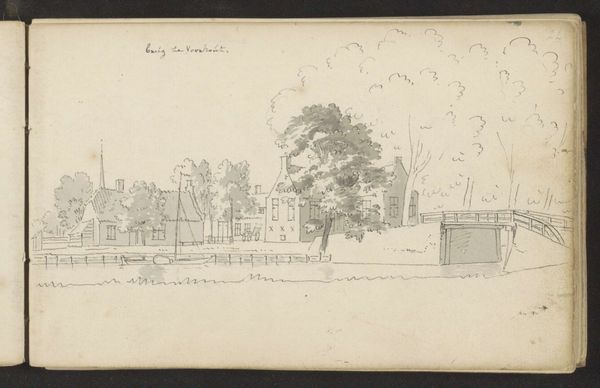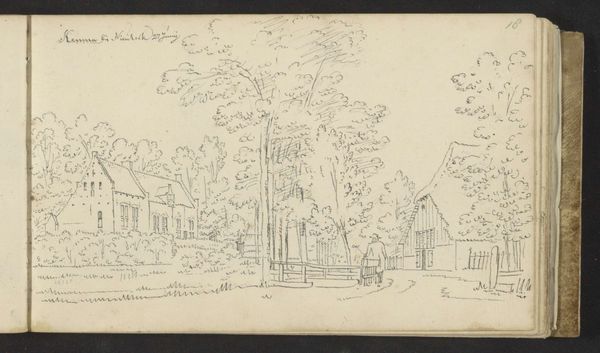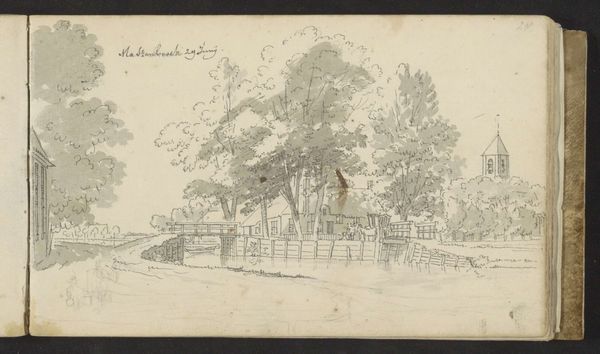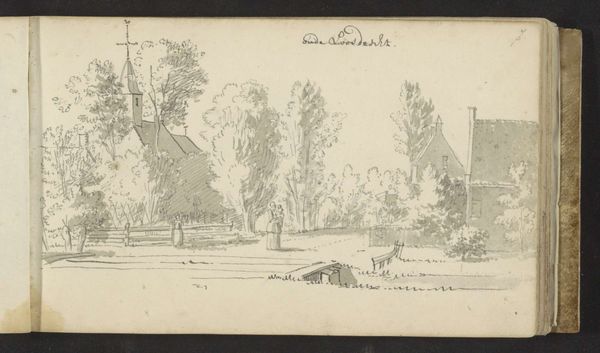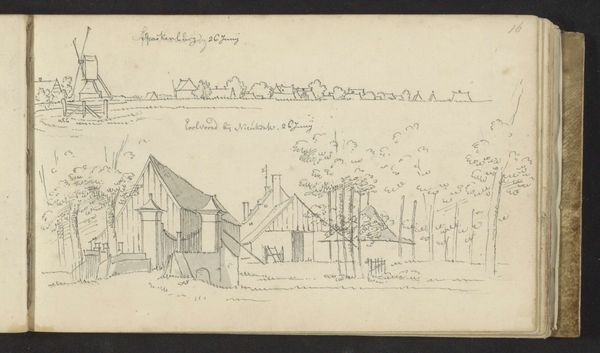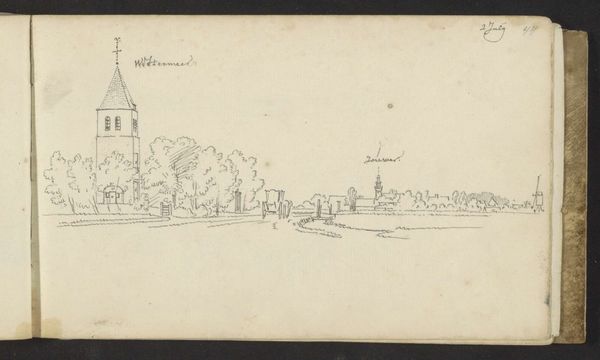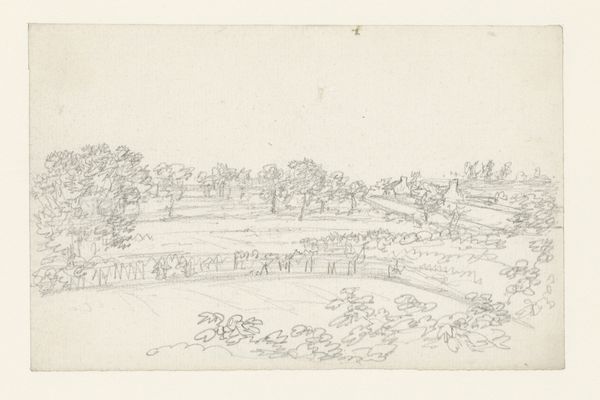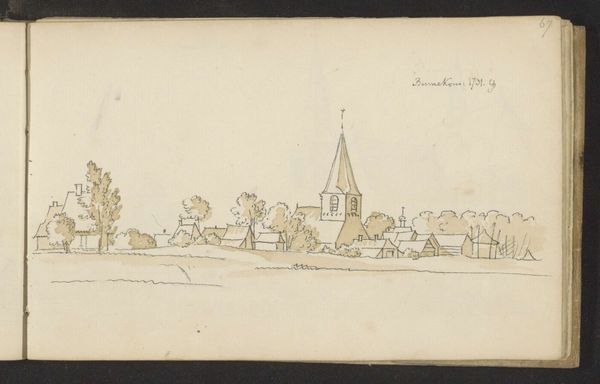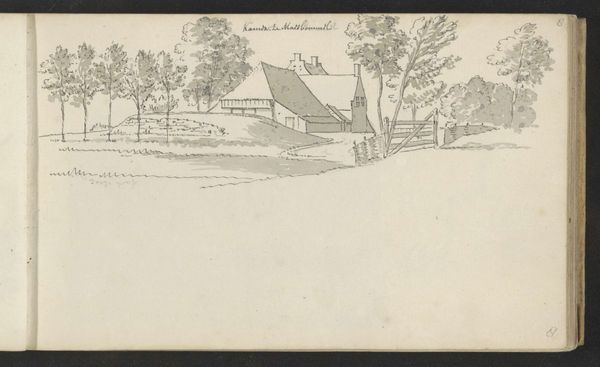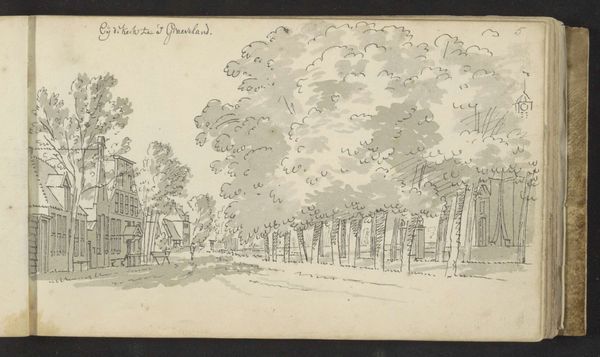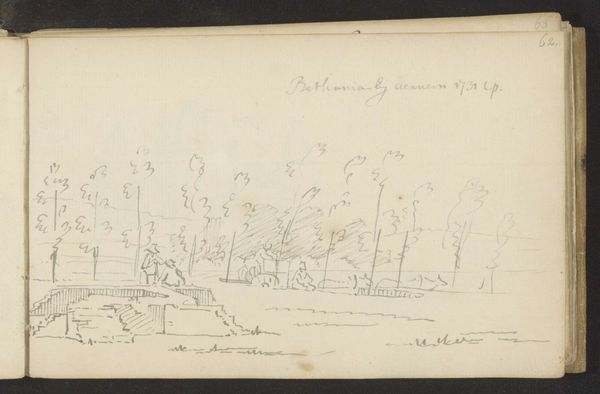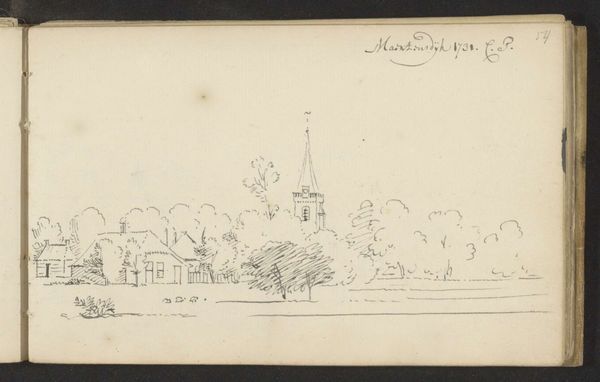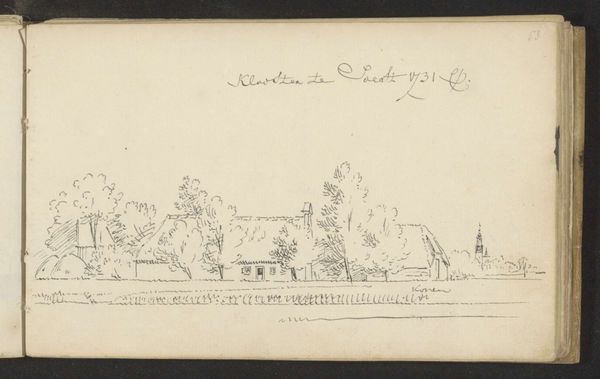
drawing, paper, ink
#
drawing
#
dutch-golden-age
#
pen sketch
#
landscape
#
paper
#
ink
#
line
#
cityscape
Copyright: Rijks Museum: Open Domain
Editor: So, here we have "Dorpsgezicht te Nijeholtwolde," or "Village View of Nijeholtwolde," by Abraham de Haen the Younger, dating from around 1732 to 1737. It's an ink drawing on paper. It has a quiet, unassuming feel, like a quick snapshot of everyday life. What do you see in this piece? Curator: Beyond the serene surface, I see a deliberate construction reflecting the values of the Dutch Golden Age. Consider the subject: not a grand historical event or wealthy patron, but an ordinary village. This reveals a cultural shift toward celebrating local identity and the virtues of community life. The deliberate choice to depict this "snapshot of everyday life" as you called it, signals the rise of a Dutch burgher class which would go on to significantly change Europe. Editor: That's a really interesting way to look at it. I hadn't considered the social implications of the subject matter itself. How does the medium contribute to that message? Curator: Ink drawings were more accessible than, say, oil paintings. This democratizes art, bringing it closer to the reach of ordinary citizens, celebrating its availability through widespread depiction of village life. De Haen made multiple copies for a growing art market of an emergent class. Consider, too, how museums and galleries amplify this cultural narrative by collecting and displaying such works, turning them into historical documents and reaffirming the importance of the "everyday." Editor: It sounds like there is much more to a simple line drawing than first meets the eye. Thank you, that really enriches my understanding. Curator: My pleasure. I’m constantly amazed at how art can be a mirror reflecting socio-political contexts!
Comments
No comments
Be the first to comment and join the conversation on the ultimate creative platform.
